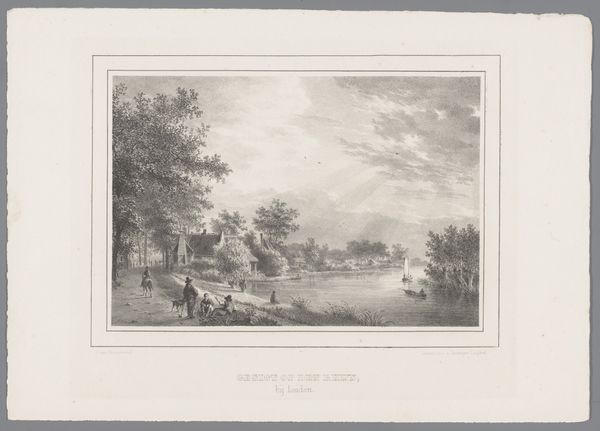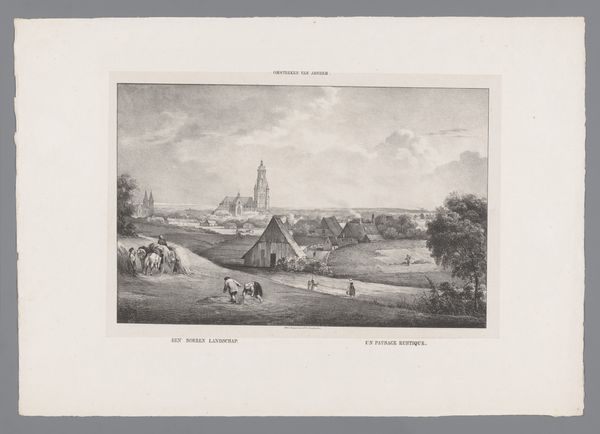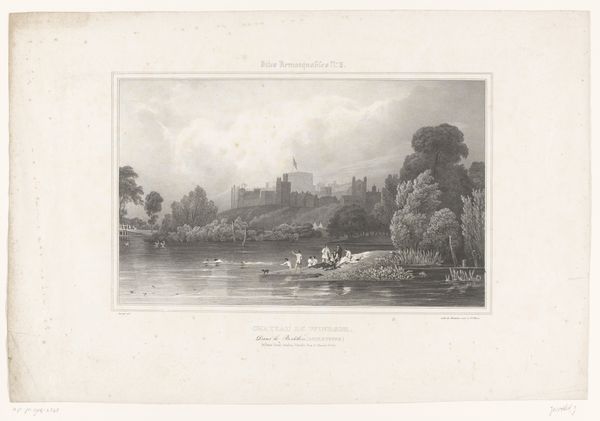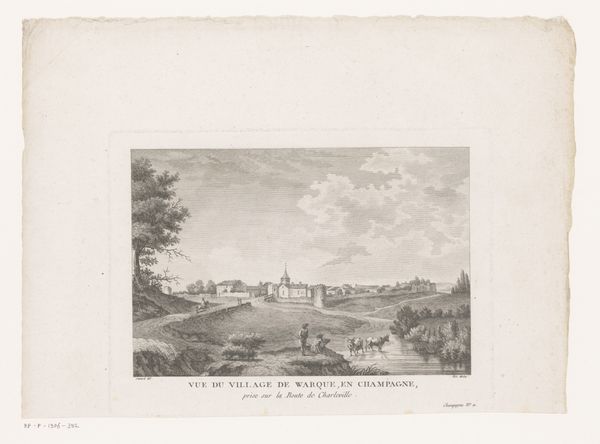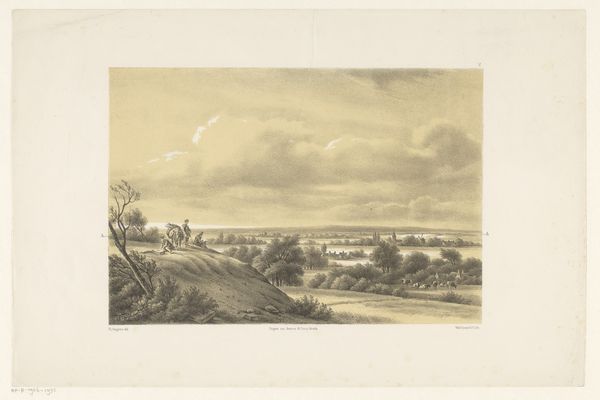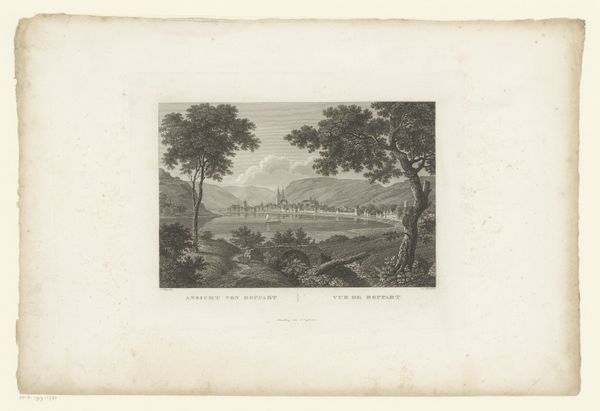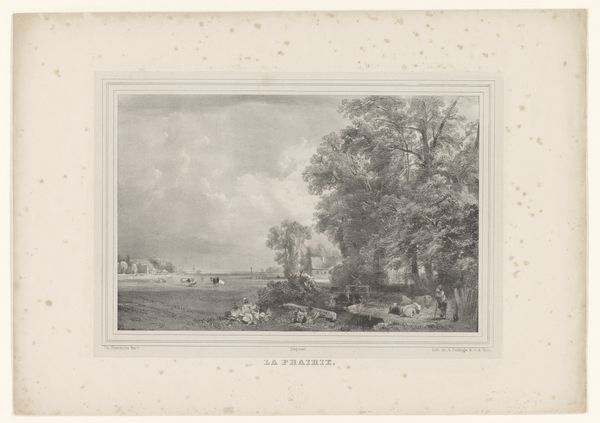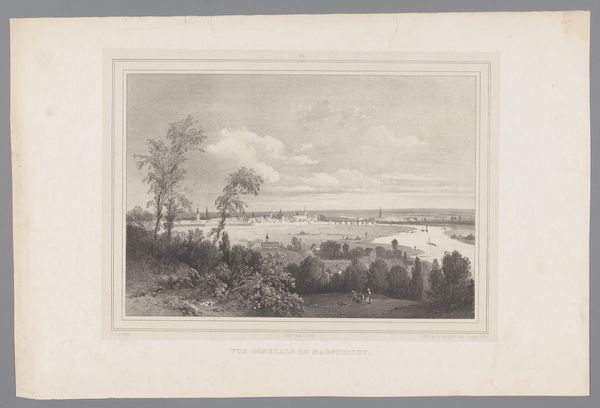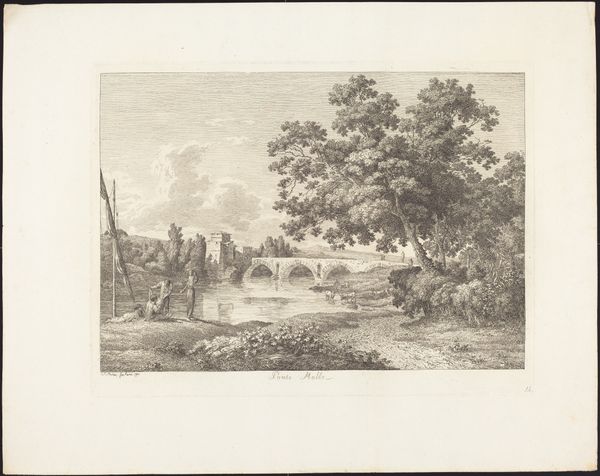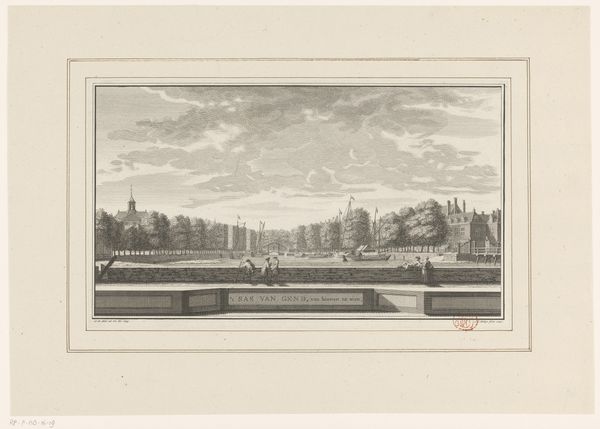
Dimensions: height 340 mm, width 485 mm
Copyright: Rijks Museum: Open Domain
Curator: Here we have "Gezicht op Arnhem vanaf de Rehberg", or "View of Arnhem from the Rehberg," a drawing from the period between 1827 and 1907, whose creator remains anonymous, housed here at the Rijksmuseum. Editor: The monochromatic tones give it a melancholic atmosphere, despite the pastoral scene. It almost feels like looking at a faded photograph, which really highlights the passage of time and makes me reflect on social changes within the depicted setting. Curator: Indeed, that delicate rendering is achieved through etching. We can explore the themes of Romanticism evident in this sweeping landscape and the detailed cityscape. Note how the etching technique captures subtle gradations of light and shadow. The medium was popular for distributing imagery and influencing public perception. Editor: The way the landscape dominates really captures the romanticized perspective. You've got this impressive river traffic next to the distant city—humanity embedded in, and almost overwhelmed by, the landscape. Do we know much about how Arnhem itself influenced artistic movements or socio-political views at the time this etching was made? Curator: Absolutely. Arnhem was becoming more commercially developed. Representations like this landscape also carried a message about the Dutch identity tied to the land and river. It speaks to a time of national self-reflection through its focus on local scenery that would be very different to a later industrial context. Editor: The figures in the foreground seem rather subdued, dwarfed by the overall scene. It’s an intriguing commentary, isn’t it? They are observing the cityscape as part of an emergent nation state—contemplating progress and the rapid transformations during the era. It's very symbolic. Curator: It raises interesting questions about perspective and privilege—who had access to such views and who were they intended to represent? Editor: Looking at this artwork makes me consider how landscape representations shaped national narratives during that era. The piece certainly sparks interesting insights. Curator: I concur. I’m left pondering on the powerful convergence of location, representation, and nationhood captured in the delicate lines of this etching.
Comments
No comments
Be the first to comment and join the conversation on the ultimate creative platform.

